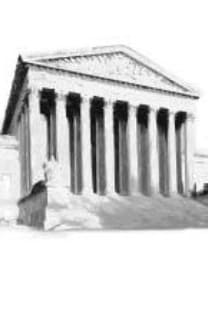The Absurd Aspect Of The Death Of God
Öz After the death of God we came up against the loss of supreme value and thus loss of meaning, some philosophers and some writers (especially absurdist ones) call the new world as chaotic and absurd. In this paper, we will investigate the relationship between the death of God and absurdity. Our main question: Does the death of God have the absurdist vein? For this inquiry, first of all, we will try to introduce what is the meaning of the-death-of-God in absurd literature and then we will make a short conceptual analysis of absurd to show relationship between them.
Anahtar Kelimeler:
Absurd, Absurdity; The-death-of-God; Value; Consume; Meaning; Meaninglessness
___
BAUDRİLLARD J. (1993) The Transparency of Evil, Verso, New York.BENNET Michael H. (2011) Reassessing The Theatre of the Absurd, Palgrave Macmillan
BLOCKER, Gene. (1975) The Meaning of Meaninglessness, Martinus Nijhoff.
BLOCKER, Gene. (2013) Metaphysics and Absurdity, University of America.
CAMUS, Albert. (1955) The Mtyh of Sisyphus, Vintage Books
GLICKSBERG, C. (1966) Modern Literature and the death of God, Martinus Nijhoff
CRITCHLEY, Simon. (2004) Very Little...Almost Nothing, Routledge.
DOBREZ, L. A. C. (2014) The Existential and its Exist, Bloomsbury Academic 2014
GIRARD Rene. (2008) Evolution and Conversion: Dialoges on the Origin of Culture, T&T Clark
GUARINO T. (2009) Vattimo and Theology, T&T Clark
HEIDEGGER, Martin. (2002) Off the Beaten Track, Nietzsche’s Word: God is Dead, Cambridge University Press
MASCETTI, Yaakov. (2002) Weak Thought and the Reduction of Violence: A Dialog with Vattimo,
NAGEL, Thomas, (1971) The Absurd, http://www.jstor.org/stable/2024942. 716-727
NIETZSCHE, F. (2007) Gay Science, Cambridge University Press.
SAGI Avi. (2002) Albert Camus and The Philosophy of The Absurd. Rodopi.
SHEHAN, Thomas. (2003) “Martin Heidegger”, In A Companion to the Philosophers. Second revised edition. Edited by Robert L. Arrington. Blackwell, Oxford
YOUNG, Julian. (2003) The Death of God and the Meaning of Life, Routledg
WEGENER, Adolph. (1967) Absurd In Modern Literature, http://www.jstor.org/stable/40121546
- Yayın Aralığı: Yılda 2 Sayı
- Yayıncı: Bursa Uludağ Üniversitesi
Sayıdaki Diğer Makaleler
İdeoloji Üzerine Felsefi Bir Değerlendirme
The Absurd Aspect Of The Death Of God
Galileo’nun İki Büyük Dünya Sistemi Hakkındaki Diyalogları ve Bilime Etkisi
Globalization and Adorno's Industrialization of Culture
Çağdaş Mantıkçı Anlam Kuramında Dil-Dünya İlişkisi ve Metafiziğin Yadsınması
Siyaset Felsefesinde Adalet, Eşitlik, Özgürlük
Relation of Law and Violence From a Foucauldian Perspective
Deneyimin İçkin Süreci: Jean-Luc Nancy ve Dünya Düşüncesi
